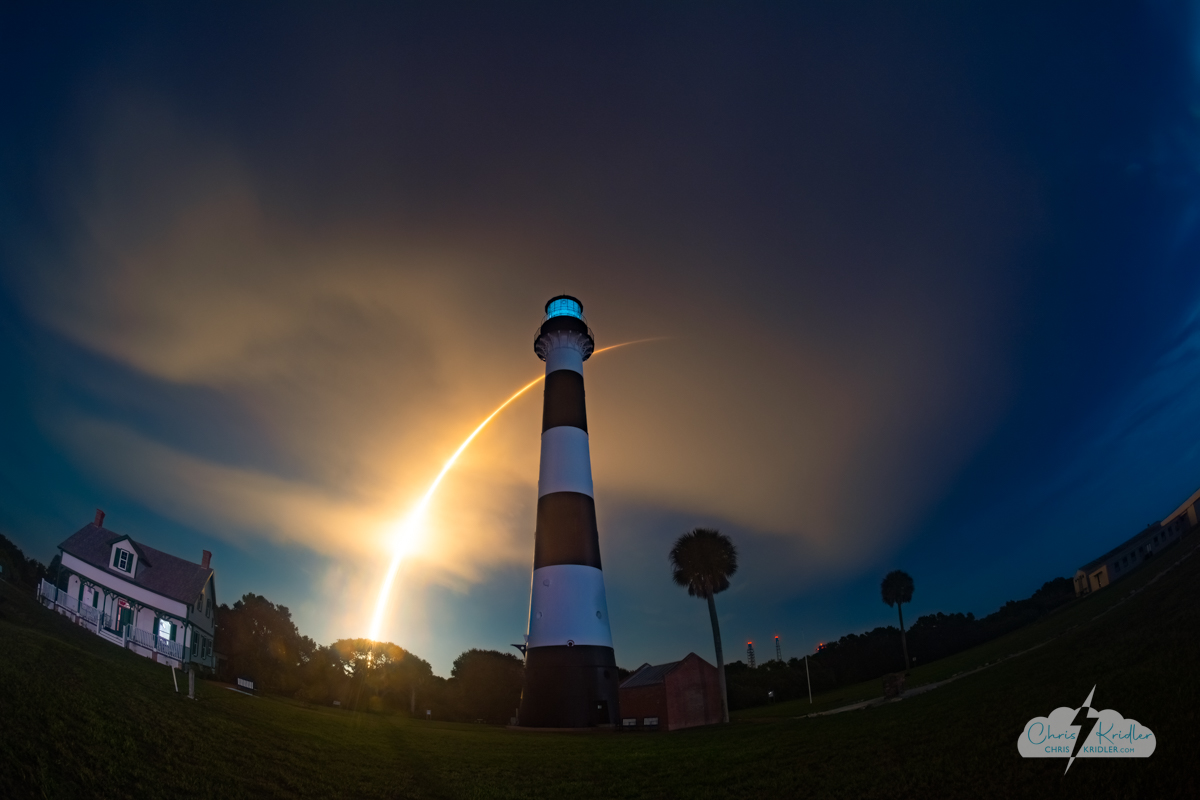Chris Kridler
Chris Kridler is a writer, photographer and storm chaser and author of the Storm Seekers Series of storm-chasing adventures.
Chris Kridler is a writer, photographer and storm chaser and author of the Storm Seekers Series of storm-chasing adventures.
Of course, someday I’d like to be super close to the booster return. I’ve seen a booster return from the Cape (and other places), but always with an obstructed view. That said, it’s pretty magical to see the separation from a little distance and witness all the mechanics of the return overhead and the boosters plummeting back to Earth. These moments really feel like science fiction.
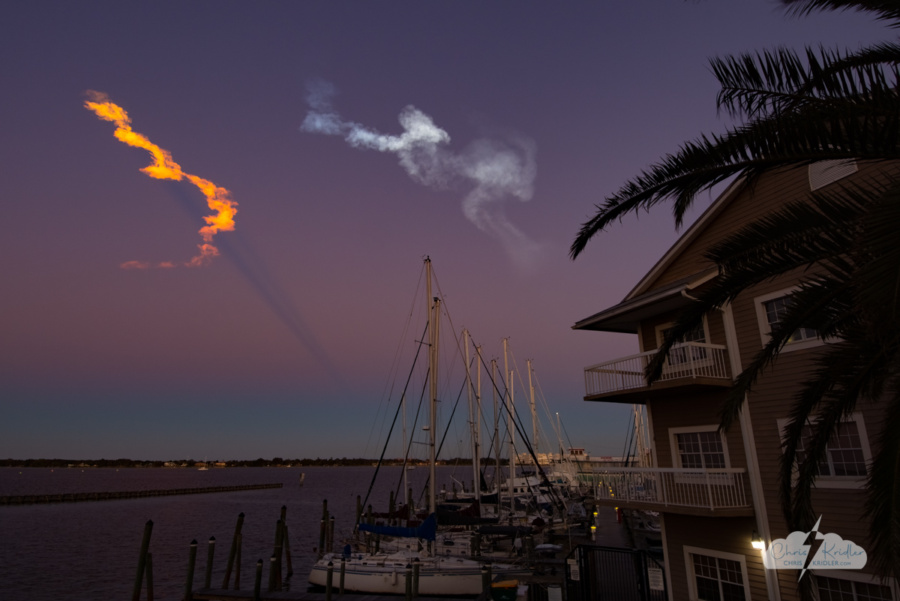
Pretty light effects from the SpaceX Heavy rocket launch on January 15, 2023.
For the zoomed shots, I have a Nikon 200-500mm lens. I love it, for the most part, but it’s a challenge to focus on the fly because there isn’t just one infinity. (As my husband jokes, it’s to infinity and beyond.) So the trees far across the lagoon might be in focus, but the rocket as it lifts into the sky might be just a little “more” infinity. The lens is heavy, and while I sometimes use a tripod, handheld works better when you’re pointing up. Thus adjusting the focus to catch a zooming rocket poses an additional challenge. There’s also a haze factor at times, not to mention insane distances, but I think today my focus just wasn’t perfect.
Still, you can see the boosters separate and make their return burns in the photos, and yes, it’s still like science fiction. One of the coolest shots is a booster silhouetted, seemingly tiny, against the fiery orange of the contrail as the hardware hurtles back to Earth.
I ran two GoPros from my viewing spot in Cocoa Village, one in “Nightlapse” mode and the other in regular timelapse mode, trying to cover my bases as the light changed just after sunset. The videos were quite similar, only one was wider than the other. You can see both in the video.
Roll over any image to see a caption, or click on one to start a slide show.
I’m competitive. I try not to be. I know this society is all about WINNING ALL THE TIME. And I want to win and get approval and all of those things. But I don’t like my competitive tendencies all that much. They lead to comparison-itis, which plays a lot into my writing career. Not so much my photography, because I know I don’t always have the opportunities other photographers have. I try to make things work where I am.
I did have a great opportunity Monday evening, but time and logistics screwed me over. We had passes to be at the Cape Canaveral lighthouse for the SpaceX Falcon 9 rocket launch and booster return. I spent hours getting my cameras ready and plotting where I would shoot.
We’d had a difficult time getting to the site (thanks to blocked roads) the last time we went to the lighthouse, so this time, I figured we’d take the “main” road we exited on last time. We traveled through the base and down this long road only to find it was blocked with no obvious, quick way around to our destination. Which we found out uncomfortably close to launch time. There was no way to figure out the right route there by then – Cape Canaveral Space Force Station is a sprawling campus webbed with pitch-black roads through wild areas that wind hither and yon – so we had to settle for a shot from the causeway.
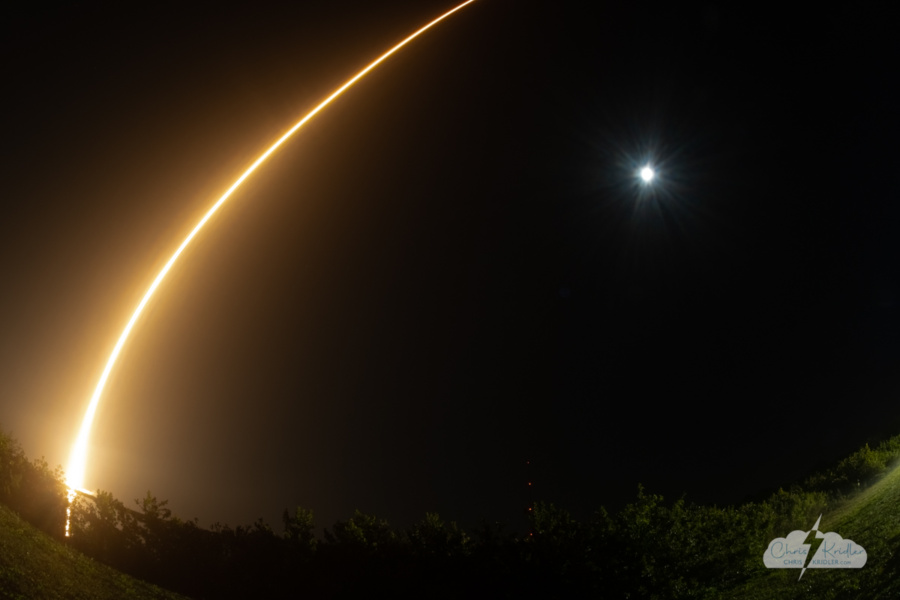
This last-minute change meant I not only couldn’t get the shots I wanted, but I didn’t have time to set up all my cameras or properly set up what I had. The photos didn’t turn out the way I wanted. I was using a different camera for the long-lens shot than I usually do. It’s heavy with the 200-500mm lens and hard to handle anyway. I fumbled with the settings, messing up some shots and, in the process, somehow turning the quality setting from JPG Fine + RAW to just Fine as the rocket was in flight, limiting my editing options later. The streak shot on the other camera went out of frame, a less than desirable outcome. Basically, it was a photographic disaster.
Symbolic of this fiasco is the exposure after the streak shot; I accidentally hit the shutter again and got a crazy zigzag light show as I repositioned (the image you see in the blog list). Eh, maybe it’s art.
These photos aren’t awful. But they aren’t what I envisioned. And I saw another shot from the lighthouse that night – not the one I’d planned out, but still, it reminded me of the opportunity I missed. There was a painful lesson in this: Figure out the blocked roads ahead of time and allow an extra hour to get there and set up. Even if the launch is in the middle of the night. Or especially if it is.
Time is a photographer’s friend. You don’t always have that luxury; storm chasing is a prime example. It’s very much a run-and-gun situation. But when you can take extra time to set up, it’s always worthwhile.
You can roll over a photo to see the caption or click on one to start a slide show.
In a year when my spring storm chase with Alethea Kontis didn’t yield all that many storms – mostly because of bad timing and an uncooperative May – I’m grateful for what I did see in 2022, including spectacular space launches and, yes, dramatic skies.
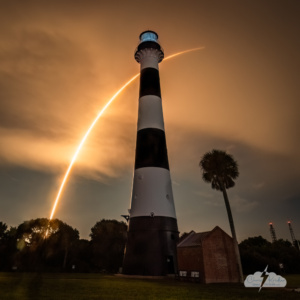
SpaceX launch beyond the Cape Canaveral Lighthouse, September 10, 2022. ©2022 Chris Kridler, ChrisKridler.com
When I looked back at my photography from this year, I didn’t obsess too much about what photos were the “best of 2023.” These are more like the most memorable captures for me. But I’m still very pleased with how some of them turned out.
This year, Stolen Butter gallery began offering some of my photographs for sale. A few of these images can be found there. Look for more soon.
With that, here’s a collection of twenty-five photos that meant something to me in 2022. I hope 2023 will be even more beautiful.
Roll over a photo to see its caption, or click on any one to start a slide show.

The setting sun touched the rocket with golden light.
The trajectory for the rocket, carrying OneWeb broadband internet satellites, almost took it overhead. With the sunset light and the clear evening, the booster separation was beautifully clear. And the booster was highly visible as it returned to Earth.
As a bonus, the sonic boom from the returning booster provided a visceral thrill – as well as a humorous surprise for our guests.
The short version: It never gets old.
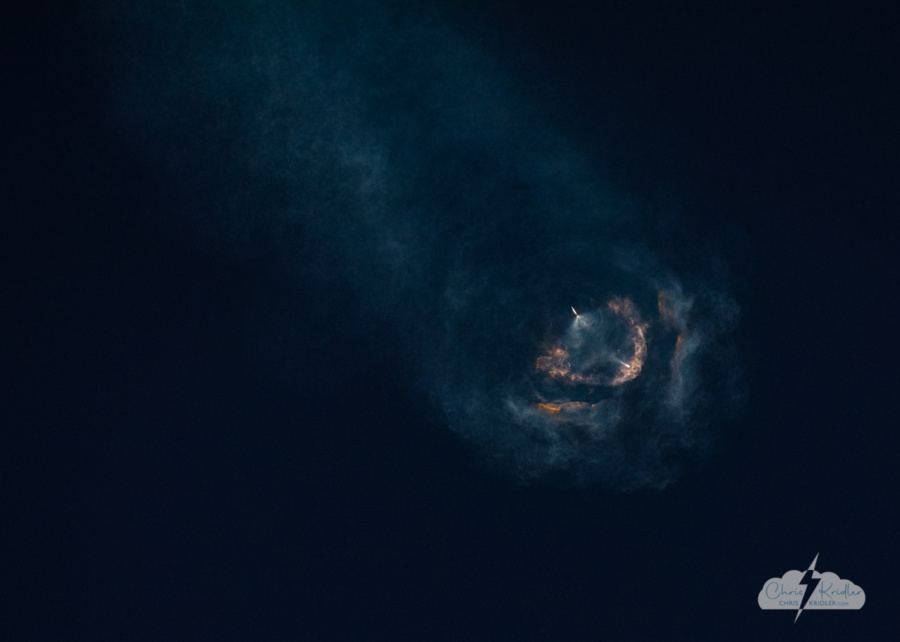
The booster moves away from the rocket.
One funny note about the timelapse video, to which I’ve added some of the photos I shot … you may glimpse a bunch of little dots flying around. These are mosquitoes, whose bloodthirsty squadrons have been plaguing us for weeks in spite of a spate of dry weather. Ah, Florida in December.
Roll over any image to see a caption, or click on one to start a slide show.
It may alarm you to know that I write poetry. I don’t do it as often as I used to. I’m more prosaic now, I guess. I write a lot of fiction. But once in a while, a moment strikes me. More on that in a minute.
I wandered over to the central Brevard County, Florida, beaches today to take photos. It wasn’t easy finding a crossover that was open. Satellite Beach and Indian Harbour Beach were especially hard-hit by Hurricane Nicole. There’s a condo building in Satellite Beach where waves scoured away some of the sand UNDER it, but it still stands.
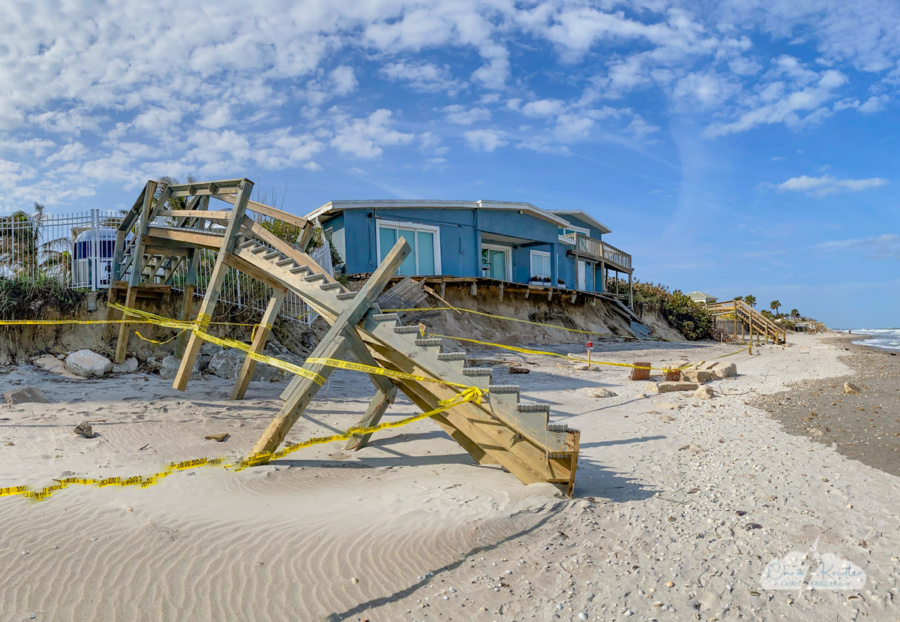
This area of Indian Harbour Beach was hit hard.
Sadly, there are homes on the precipice too. We might not have quite as much damage as Volusia County, but these residents face a very real danger from extreme erosion. I can’t help but think we’re building sand castles in the face of climate change, and the tide is turning.
As I walked, my eyes were drawn from the damage to the piles of seashells. There weren’t a lot of fancy ones – I can’t remember the last time I found a whelk here. I used to live close to the beach, a five-minute walk, back when I moved here more than twenty years ago. I walked the beaches all the time and found some beautiful shells. But today, even in the piles of seemingly unremarkable shells, color caught my eye.
And then a poem materialized. And it’s about a lot more than walking on the beach after a storm. You’ve survived the past few years. It’s been hard, right? I know it has been for me. But I needed to hear this from the universe. Maybe you need to hear it too.
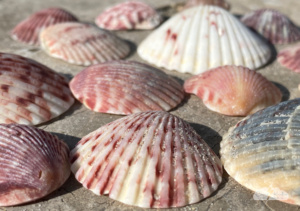
I found lovely shells amid the debris.
You go looking for damage
in the wake of a storm,
one of so many, so often, so now.
Beach steps are twisted.
Homes hang off a cliff.
But you’re distracted by the shells,
bounty washed up,
coins of the deep
and somehow you find room in your pockets
you didn’t know you had
for patterns and pinks and beauty.
The sun is out today.
~~~
Roll over any photo to see a caption, or click on an image to start a slide show.











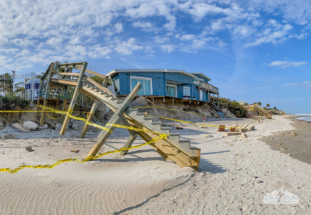
I don’t have much to say except WOW! But I guess I should tell the story behind this unusual photo (below) of the launch of Artemis in the wee hours of November 16 from Kennedy Space Center.
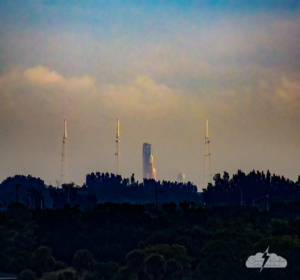
August 29, the launch was scrubbed. We got a very distant view of the Artemis moon rocket on the launch pad, shot from Cocoa, Florida.
After technical delays, the “go” for launch kind of caught us by surprise. All of a sudden we had ten minutes to leave the house and get into position for a launch. And my husband was still in his jammies.
He got himself sorted with me nagging him, and I drove us down to the riverside – technically, the Indian River Lagoon here in east-central Florida – and the Rockledge city dock. Given it was almost 2 a.m. now, I was kind of surprised to see it full of people.
I’ve always wanted to get that dock in a launch photo, and now seemed like an excellent time. But I had literally just a few minutes to set up. The moon was out, and of course, that had to be in my photo. After all, this rocket would be looping around the moon in preparation for future human spaceflights. And I thought the trees might make a fascinating foreground, IF it worked out. It’s kind of the opposite of what you usually want or seek in a time-exposure launch photo – a nice, clear view of the streak.
I enjoy finding interesting foregrounds. In this case, the foreground tells a lot of the story and evokes our town, our Space Coast. And the launch is still dazzling as the light streaks through the sky.
This was a very bright rocket. The rumble, which we’d expected to be thunderous, wasn’t all that. But the brilliant lighting provided by Artemis made this photo glow.
Click on the image to see a larger version.
We were lucky. We were lucky in Hurricane Ian, which devastated southwest Florida. And we were lucky in Hurricane Nicole, in that we’re just far enough inland that we didn’t have to worry about our house falling into the ocean.
With climate change, all of the damage we’re seeing now on Florida’s east coast may become commonplace. Not that anyone wants to hear that.
My husband and I went out for a drive in Cocoa and Rockledge, Florida, while our power was off in the wake of Nicole. We saw sunken boats, lots of tree debris, a mess where the river road — the road that runs along the Indian River Lagoon — was underwater, and damaged docks. And this storm was barely a Category 1.
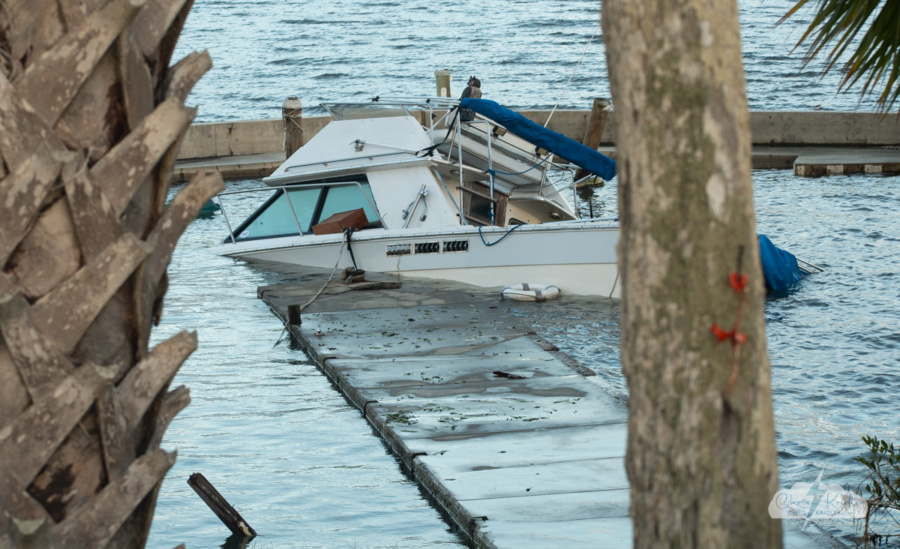
This boat foundered in the lagoon in Rockledge – ironically, on the site where a small boating club was blown away in Hurricane Irma in 2017.
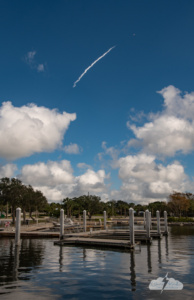
On November 11, a SpaceX Falcon 9 rocket launches, as seen from Cocoa Village.
The work goes on. And so does the cleanup.
Don’t miss the photos and video of the pounding surf as Nicole approached the east coast in my previous post.
Roll over any photo to see a caption, or click on an image to start a slide show.
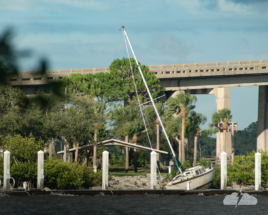
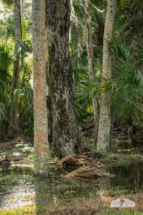
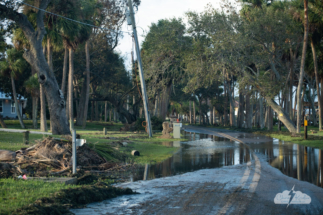
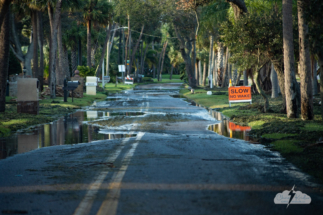
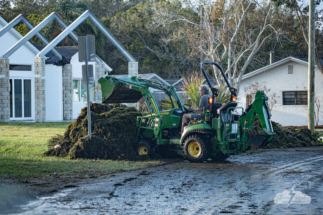

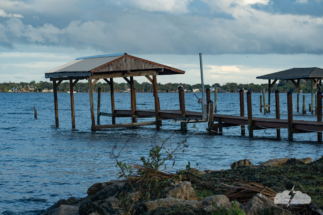
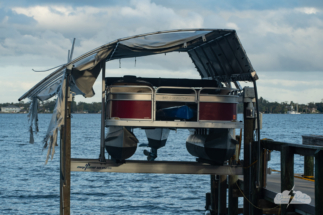
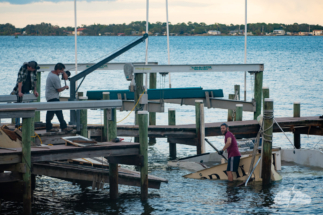

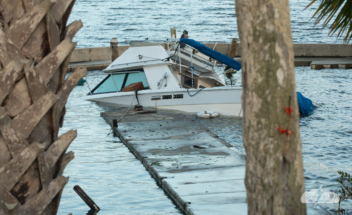

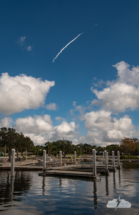
Going out in the wind today was so therapeutic. It wasn’t yet windy enough to be dangerous (except for maybe those insane people kiteboarding in the tropical storm waves), but it was invigorating. And also entangling, when it came to my hair.
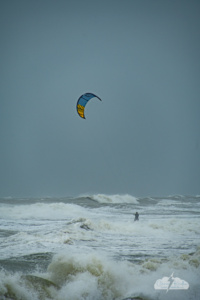
Courage or madness? The wild waves posed an irresistible challenge.
I can see why surf reports like SurfGuru call waves like this a “washing machine.” So why were people fishing, swimming and riding kiteboards? I don’t know, but they made for interesting photos and video.
A steady stream of spectators came to the pier to gawk at the waves and activity, until squalls of fine, blasting rain chased them away. I stayed for a while taking photos and video and put my GoPro under the pier to get a short timelapse, which you’ll see in the video. By the time I left, I was soaking wet from the rain, at least anywhere below my rain jacket.
Roll over a photo to see a caption or click on any one to start a slide show.
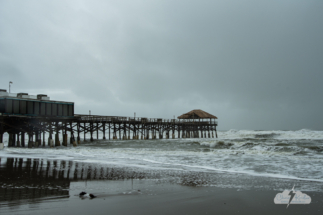
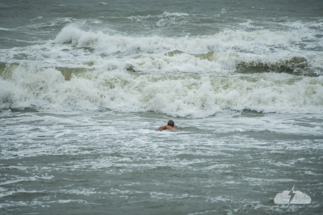
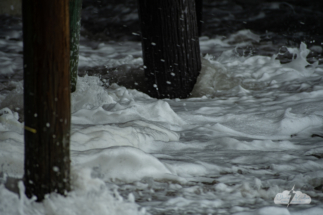
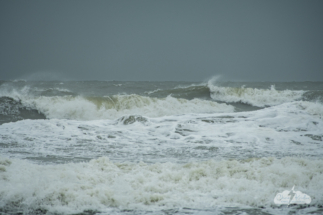
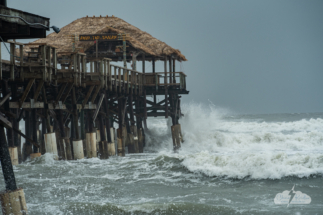
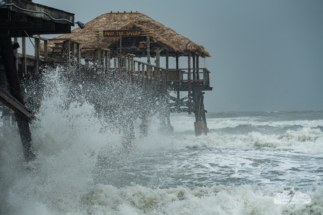
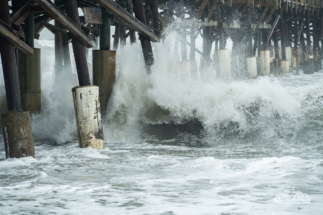
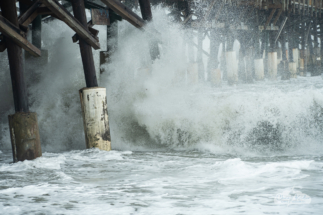
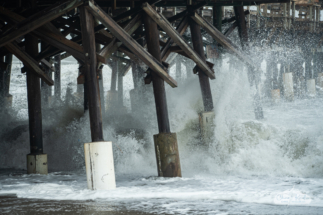
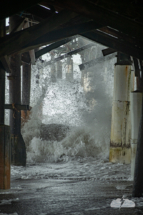
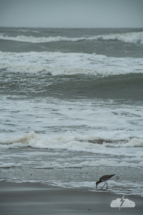
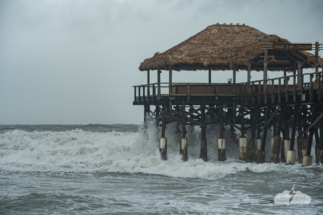
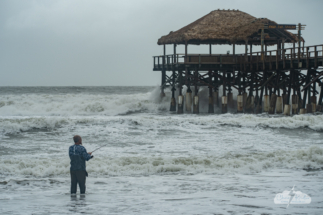
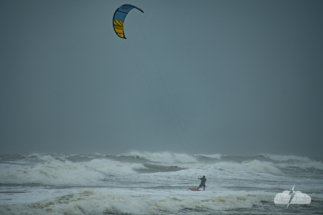
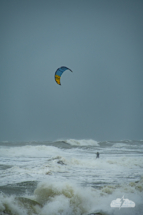
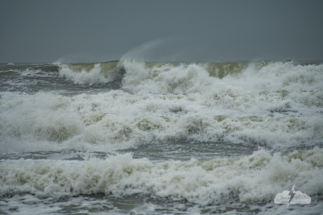
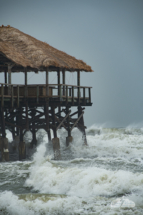
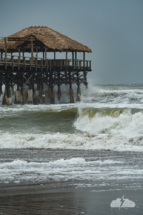
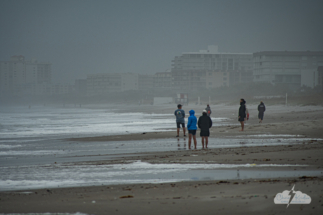
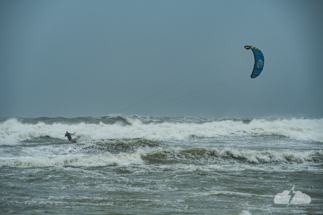
Life’s been busy, so I haven’t posted all the rocket launches I’ve shot lately from Florida’s Space Coast. And there have been a lot. While one was a United Launch Alliance jaunt, the rest were SpaceX.
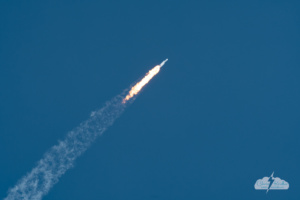
The SpaceX Falcon Heavy rocket carried Space Force satellites and other payloads into orbit on November 1.
Well, the launch was so secret, even the weather got involved. Even though we were lucky enough to get passes for the ITL (or Integrate-Transfer-Launch) causeway in the northern part of Cape Canaveral Space Force Station, dense fog obscured almost everything, including lift-off.
The double booster landing wasn’t so clear either, at least from where we were. I’d love to get in a better position to shoot the boosters returning. The spectacle is so sci-fi. The sonic booms were viscerally entertaining, however, and I got a few nice shots of the rocket in its ascent.
The video focuses on recent SpaceX launches including today’s Heavy.
Click on any image below to start a slide show; roll over them to see captions.
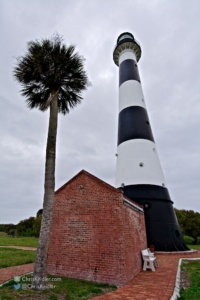
A photo I shot at the lighthouse in 2015.
Still, the lighthouse makes a dramatic foreground for a launch photo. I can’t help but contrast ships from centuries past with today’s spacecraft, like the SpaceX Falcon 9 that launched on Saturday, September 10. (You can read more about the lighthouse’s history and how to visit it here.)
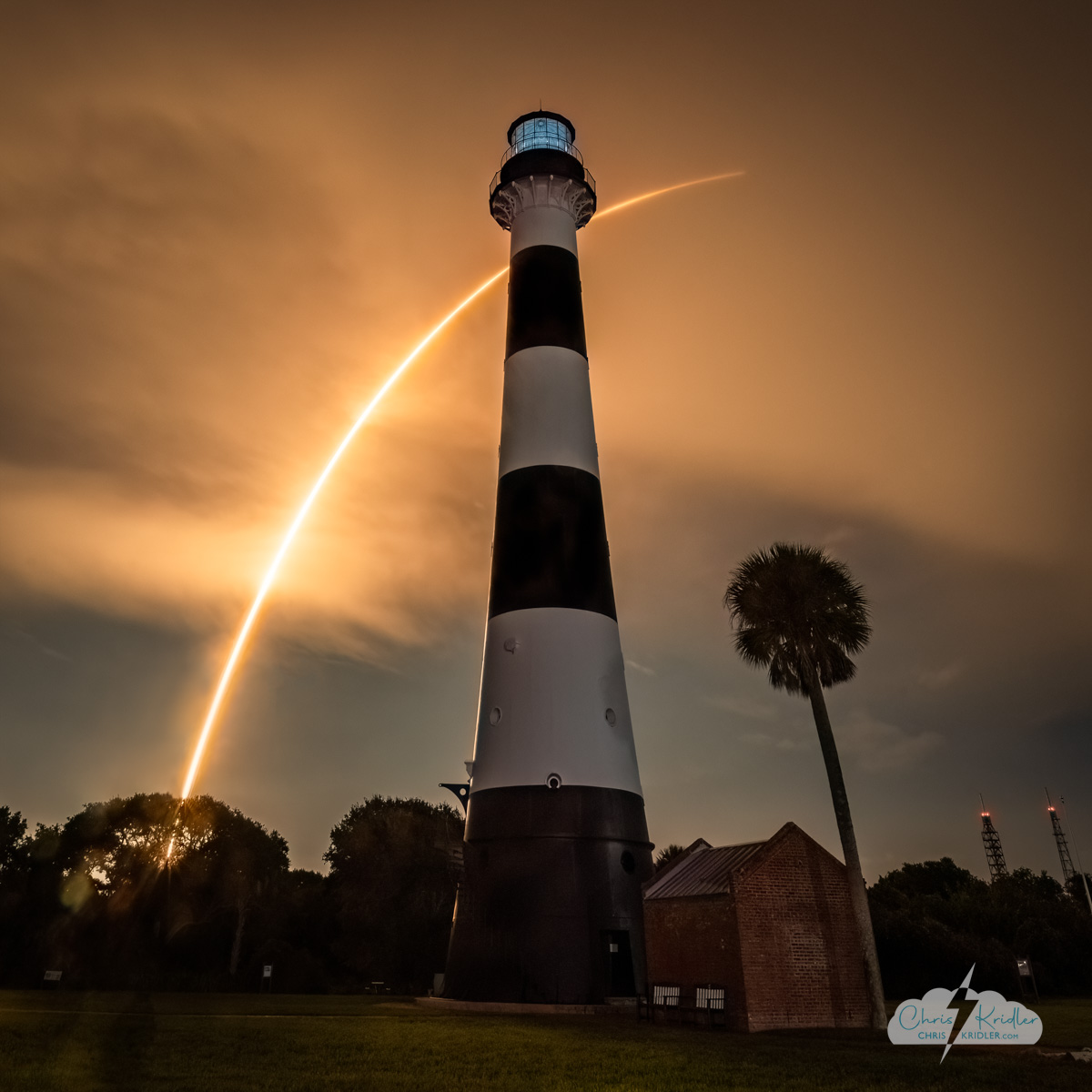
SpaceX launch beyond the Cape Canaveral Lighthouse, September 10, 2022. ©2022 Chris Kridler, ChrisKridler.com
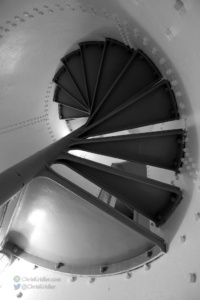
Stairs inside the lighthouse (2015 photo).
As the rocket lifted off, it became clear that the northeastward trajectory meant the rocket wouldn’t lift high enough (visually, anyway) to rise above the lighthouse. For a second I hoped it might pass right behind the light at the top, but still, it made for a very pretty scene. I cropped the vertical shot into a square one.
I shot the launch with a second camera using my 10mm fisheye lens (below). I like this, too, because the lightkeeper’s cottage (a replica) is visible at left. And the GoPro timelapse video is a fun little glimpse of the lift-off after the moonrise, which was almost directly behind us. The clouds and rain thinned out just enough to make this photo opportunity work.
The rocket carried more Starlink internet satellites and the new (and alarmingly large) BlueWalker 3 communications array, which will soon show up in our photos, no doubt.
